- Home
- W. Bruce Cameron
The Dog Master
The Dog Master Read online
Begin Reading
Table of Contents
About the Author
Copyright Page
Thank you for buying this
Tom Doherty Associates ebook.
To receive special offers, bonus content,
and info on new releases and other great reads,
sign up for our newsletters.
Or visit us online at
us.macmillan.com/newslettersignup
For email updates on the author, click here.
The author and publisher have provided this e-book to you without Digital Rights Management software (DRM) applied so that you can enjoy reading it on your personal devices. This e-book is for your personal use only. You may not print or post this e-book, or make this e-book publicly available in any way. You may not copy, reproduce, or upload this e-book, other than to read it on one of your personal devices.
Copyright infringement is against the law. If you believe the copy of this e-book you are reading infringes on the author’s copyright, please notify the publisher at: us.macmillanusa.com/piracy.
For my mother, Monsie Cameron, who has been on my side every step of the way
TERRITORY OF THE NORTHERN CREEDS
PRESENT DAY
At exactly 9:00 A.M. the uniformed guards at the back of the room pulled every door shut in muscular coordination, a metallic clang echoing throughout the college lecture hall. The security men were grinning: maintaining the peace on a liberal arts campus mostly consisted of tolerating unruly students while keeping them approximately in line, so this exercise, an annual ritual, gave them a fleeting sense of order triumphing over chaos.
The loud crash of the doors had startled the conversations into silence, and now the students arrayed in the stadium-style seats sat with their necks twisted toward the back of the room to see what was going on. Immediately a loud and urgent pounding of fists on metal proclaimed the desperate despair of those who hadn’t made it inside in time for class. Then, after just a moment, the pummeling abruptly halted, as the guards on the other side of the double doors told the late arrivals they were tardy and therefore had to exit the building.
It was the first class of the first day of the first semester for these freshmen. Prompt attendance was strictly required.
Welcome to college.
Dr. James K. Morby—“Morby the Mortician,” as he wasn’t supposed to know he was called—broke from the shadows at the back of the stage and strode briskly to the podium. He wore a crisp blue suit, a white shirt, and a tight necktie, an outfit he’d don for just this first week before slipping into his more habitual plaid shirt and baseball cap. There was a purpose to his clothing, for the careful way his sparse brown hair was combed back, for the clean shave he’d applied to his baby-faced cheeks, for the stern glare in his normally folksy hazel eyes. It was all costumed and choreographed to turn these kids from high school students into college students. Morby had just three classes over the next week to get it done.
“The reason,” he intoned into his microphone, “that you have been assigned seats is so that I may call on you by name.”
Morby waited, watching the students glance at each other before they uneasily rearranged themselves—who knew the seating chart was serious? Morby spotted a bank of empty chairs and then glanced at the screen in front of him. “Thus when I call on Mr. Brosh—are you here, Mr. Brosh? Kevin Brosh? No, you are not here. But had you been here, I would have been looking directly at you.”
Morby paused and savored his mental image of Brosh’s friends telling him that Morby had been looking for him in class. Mr. Brosh would not be absent again.
Morby let them mull that one over. He knew that the freshmen who had by plan or chance arrived early enough to clear security and make it to the lecture were feeling a bit smug about themselves at the moment, and he knew their smugness wouldn’t last much longer.
Freshman orientation had taken most of the weekend. Then Sunday afternoon, yesterday, parents had tearfully departed and the students had seized their new independence and ridden it hard into the night. Most of the eyes regarding him now were blurry and unfocused, shimmering with fatigue and hangovers. They’d caroused, they’d pursued fornication, they’d approached ceramic bowls on humble hands and knees—they thought they had college figured out.
It was up to Morby to slap that notion out of their heads. This was the only 101-level class required for all incoming freshmen, and the only one that accelerated to full speed from the first moment—the other professors mostly ran through their syllabi and passed out materials the initial few days, waiting for Morby the Mortician to work his magic.
“Your reading assignment is the first five chapters of your textbook on the Upper Paleolithic.” It was 120 pages, probably more than any of them had been required to read in any two-day period in high school. “We’ll have a test on the material and today’s lecture on Wednesday. Friday your papers are due at the start of class.”
They were bright kids or they wouldn’t be here, but Morby’s class, Early Humans, was the scholastic equivalent of being tossed into the deep end of the pool. Wednesday morning they would be dismayed at the depth and complexity of the exam; Wednesday afternoon they’d be panicked over their grades. A scientist at heart, Morby had been tracking Wednesday test performance in a database for a decade, and was proud of the defibrillating effect of his scoring: 75 percent would fail, 20 percent would barely get a D, and a handful of students would freakishly pass.
There had never been an A given on the first test in the history of the class. Morby doubted he, himself, would ace the thing—those questions were hard.
In a cold sweat—how were they going to tell their parents they were flunking out of college?—most of them would dig into their essay assignments with the fervor of the newly converted. Wednesday and Thursday nights the security guards would have far fewer intoxicated students on their hands.
“So: about your essay assignment. For many years, it has been thought that early man lived in peaceful, communal harmony within his family, tribe, and at large with other Homo sapiens. Of late, however, a new school of thought has argued that there’s no reason to think that prehistoric man was any less brutal or warlike than we are today.” Morby surveyed his audience, most of whom had sunk into a swamp of complete lethargy. “Your papers will be twenty-five hundred words. Please address this issue, arguing for one point of view or the other. Warlike, or peaceable? I don’t care which side you take, just make sure your logic is sound, your resources reliable, and that your words are your own.”
Despite this last admonition and the prominent warnings about plagiarism on the first page of the student manual, Morby knew that by Monday morning, when the essays, bloody with red ink, were handed back to their authors, nearly two in ten freshmen would find themselves facing academic probation. Raised in the cut-and-paste generation, they literally didn’t understand what constituted intellectual property theft.
Being called out publically as a plagiarist was humiliating, but it gave enough shock and awe to the rest of the freshmen that the problem was far less prevalent on this campus than at other, gentler schools.
The probations would be erased from their records by the end of the semester, and the grades—few of them would get better than a D on the essay—would also be mitigated by more papers and more tests that were designed to the academic purpose of learning and not the enculturating purpose of boot camp.
“All right. The last great glaciation, commencing approximately thirty thousand years ago.” The slide on the screen behind Morby flashed a map of the eastern hemisphere. “This was, beyond a doubt, the most dramatic time in the history of our species. You think we have climate change issues today? We’re talking about tempe
rature fluctuations in the extreme, up to seven degrees Celsius year to year. You could bounce from a fairly normal period to years in which the ice never melted, not even in summer. Trees were bulldozed by the advancing glaciers, uprooting us from our arboreal environment and driving us out onto the steppes, where we served as hunters and hunted, predator and prey.”
A new slide went up behind him: a drawing of an enormous cave lion, almost the size of a bear, rendered by the artist to appear ready to pounce. The animal had a face something like an African lion, but was covered with a shaggy, light grey coat.
“Look at the size of this thing! When we examine bones from that era, we see that many of the most dreadful creatures were monsters compared to today. So when we went hunting, we not only had to compete with lions, bears, wolves, and other tooth-and-claw animals, we had to run from them. No wonder life expectancy was so short—most early humans didn’t manage to make it to your age, and the average life expectancy was around thirty-three—though someone clever enough to make it to fifteen probably survived to be fifty or so.”
Grudgingly, they were giving Morby their full attention.
“We also had to compete with this fellow.” A slide went up of a Neanderthal standing next to a modern human. “Look at him. Not taller, but certainly bigger, hugely strong, and with a larger brain. Yet here we are today, running the planet, when by all indications this guy’s descendants should be in the literal driver’s seat. Why us, then? To paraphrase Faulkner, how did we not only endure, but prevail?”
Morby put up his favorite slide of the lecture and glanced with a knowing smile over to where his TA, Tommy, normally sat. His smile wavered—Tommy’s seat was empty. Very odd, to miss this delicious day. The professor shrugged it off and turned back to the slide. It was a wonderful photograph of some recently discovered cave art dating back to the Aurignacian era. There was a jumble of shapes; more than one artist had plied his skills over the years, painting reindeer and elk and lions over one another in a crazy two-dimensional prehistoric stampede, but for Professor Morby there was really only one image: the young man in the middle, holding the end of what was unmistakably a leash, leading to what was unmistakably a red collar, around the neck of what was unmistakably an enormous canine. A domesticated wolf.
“As you will discover,” Morby continued almost reverently, “I have my own theories.”
He and Tommy would have exchanged another glance at this juncture—the point at which some of the students, looking at their textbooks, would suddenly make the connection and look up in surprise: Hey, Morby wrote this thing.
There would be no faking their way through their reading assignments in this class, not with the author evaluating their comprehension. So they’d focus, many of them detesting the subject so much that when, about halfway through the textbook, they did stumble across Morby’s theory, the one on which his entire career had been built, they’d largely miss the significance.
“We have no written record of this, the most dangerous time for mankind, we have only our conjectures, based on the fossil record. Have we unearthed every skeleton of every species that walked the land and swam the waters? Probably not. Can we describe the topography of the landscape before the ice sculpted it into its current shape? No, no more than we can say precisely what hills and valleys existed under what the glaciers eventually turned into Lake Michigan. But we can say this: They were us, these humans. They had our brains. They weren’t as tall and they didn’t live as long, but there’s no reason to suppose they didn’t have language. They just didn’t have symbols—or at least, symbols that have survived the eons. So remember that, when you read of the harsh challenges facing prehistoric man. They were us.”
And then something unprecedented: A single set of doors in the back banged open and, like a deputy set on serving a warrant, Tommy the TA marched in. Ignoring the freshmen necks craned to see him and the freshmen mouths gaping open at the bold interruption, Tommy came straight down the aisle, his eyes shining.
Morby pulled in a breath and held it, his heart suddenly pounding. Tommy read the question on his face and nodded with delight, bounding up the short set of stairs to join the professor on the stage. He reached out and placed his hand on the microphone to shield their conversation, while a low murmur began to build in the crowd.
“I just hung up with Beauchamp,” Tommy said, something like triumph threading tension into his voice.
“They found her,” Morby whispered, a shiver traveling up his spine.
Tommy nodded exultantly. “They found her,” he affirmed.
The two men, teacher and pupil, mentor and student, stared at each other in amazement over what they’d just dared to say. Then, slowly returning to his role as professor, Morby turned to face his class. Tommy’s hand dropped away from the microphone.
“Gentlemen and ladies, this is Mr. Rooker, my assistant. He will complete today’s lecture and will be leading the class for the next week or two. I have something I need to tend to. I need to catch a plane.”
* * *
Seventy-two hours later, Morby was crouched over a dig site, the earth peeled back to reveal the treasures underneath. Standing above him were a French graduate student named Jean Claude and Morby’s longtime friend and collaborator, Bernard Beauchamp. Before him, the dirt brushed away with strokes as careful as an artist applying paint to canvas, lay the skeleton of a Homo sapiens—a male. The body was nearly intact, a beautiful find—someone long ago had taken care to inter this corpse with respect and even love.
But it was what lay next to the human that was so remarkable: an enormous canine, larger than any modern wolf Morby had ever seen. Carbon dating would confirm what the professor already knew to be true: The man and the wolf had been buried together.
Beauchamp was grinning because Morby was weeping. He put a hand out and gripped Morby’s arm.
“Tu avais raison, mon ami.” You were right, my friend.
Jean Claude, looking barely older than the freshmen from the lecture hall, had driven Morby the four hours it had taken to get to the dig site and knew only that the American was good friends with his boss. He was a little bewildered, now, watching the two men wrestling with such profound emotion.
“Regardez le cou. Tu vois?” Morby whispered. Look at the neck. See?
“Red,” Beauchamp nodded, answering in heavily accented English.
All soft organic matter had been leached away by the greedy demands of the soils and their denizens, though in return the bones had been gifted minerals that had helped preserve them. Whatever might have been looped across the wolf’s neck had been lost forever, but the ferrous oxide that had decorated that loop still remained, a thread of dusky red. Just as it appeared in the cave painting.
“What is it? A wolf? Or a dog?” Jean Claude asked, mimicking the quiet tones of the other men.
“A wolf, but also a dog,” Beauchamp murmured.
“No,” Morby corrected after a moment. “Not a dog. The dog.” He turned to Jean Claude. “You’ve found the very first dog.”
Jean Claude contemplated this. Morby wondered if the young man saw what Morby saw, what Beauchamp saw: fossil evidence of a turning point in human history. No: To mimic the sentence structure he’d just used, not a turning point, the turning point. When we went from enduring to prevailing.
“But then, who is the man? There must be a reason why he is buried with the dog.”
Morby stood, his knees snapping back into position. He slapped his palms on his sides, raising dust in the afternoon sun.
“Well yes, you raise a very interesting point,” Morby agreed. “I have spent so much of my career pondering how it is possible that wolves evolved into our friends and companions—evolution being the glacial process that it is. But suppose we look at it a different way: How did we humans go from being preyed upon by wolves to living with them? From wolf food to dog masters, if you will? Now you’re talking adaptation, instead of evolution. Now you’re not talking centuries, you’re
talking a single generation, the life of one person. Twenty years, let’s call it. So, Jean Claude, you ask an important question, a very important question, indeed.
“Who is the man?”
BOOK
ONE
ONE
Year Nineteen
The big mother-wolf and her mate had made a den in a small cave along the stream. She was heavy with her pups, and she and the father had left the pack to give birth. She had done this before—left to bear her young, tended to by her mate, only to return to the howling site when her pups were able to travel and eat solid meals. Memory and instinct were both guiding her now.
The male-wolf was out searching for food. It was still cool, this spring, and the air carried elements of ice and water, buds and new leaves, stale grass and lush shoots. She took a deep whiff of it, noting that though he had been gone some time, she could still smell her mate on the breeze. He was not far away.
A shift inside of her told her the time had arrived. The birthing would start momentarily. Suddenly extremely thirsty, she left the den and eased down to the stream and lapped at the clear water. This would be her last drink on her own for several days. Her mate would regurgitate all of her sustenance while she lay nursing. But right now she drank and drank, some primitive part of her calculating the need to take on liquid.
Her senses alerted her to a shift in the breeze. She heard it in the trees and smelled it before it stirred her fur, but by that time her head had already whipped around, her pupils dilating and her nostrils flaring.
Lion.
The wind was now flowing straight from the direction of the den and it carried with it the scent of a killer. The mother-wolf could tell that the lion was approaching, whether by chance, or because it was tracking the tantalizing odor of the fluids that had started to leak from her.

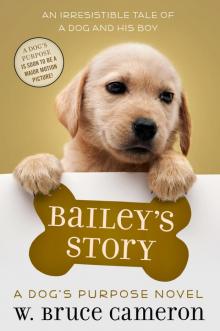 Bailey's Story: A Dog's Purpose Novel
Bailey's Story: A Dog's Purpose Novel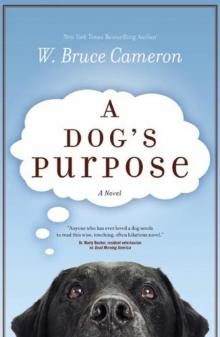 A Dog's Purpose
A Dog's Purpose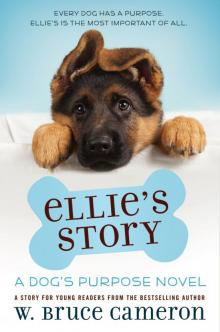 Ellie's Story
Ellie's Story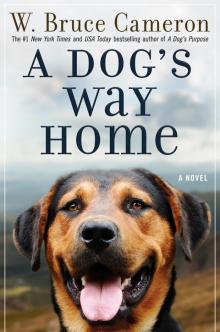 A Dog's Way Home
A Dog's Way Home Molly's Story
Molly's Story A Dog's Journey
A Dog's Journey The Dogs of Christmas
The Dogs of Christmas A Dog's Perfect Christmas
A Dog's Perfect Christmas Lily to the Rescue: Lost Little Leopard
Lily to the Rescue: Lost Little Leopard Bella's Story
Bella's Story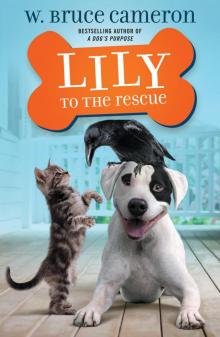 Lily to the Rescue
Lily to the Rescue Lily to the Rescue: The Not-So-Stinky Skunk
Lily to the Rescue: The Not-So-Stinky Skunk A Dog's Courage--A Dog's Way Home Novel
A Dog's Courage--A Dog's Way Home Novel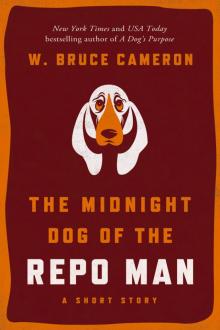 The Midnight Dog of the Repo Man
The Midnight Dog of the Repo Man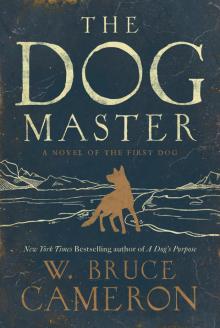 The Dog Master: A Novel of the First Dog
The Dog Master: A Novel of the First Dog Emory's Gift
Emory's Gift Lily to the Rescue: Two Little Piggies
Lily to the Rescue: Two Little Piggies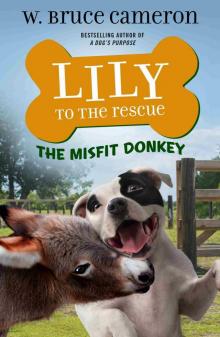 Lily to the Rescue: The Misfit Donkey
Lily to the Rescue: The Misfit Donkey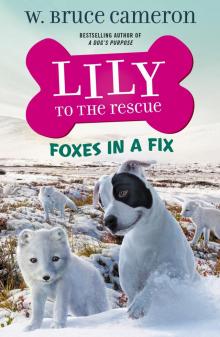 Lily to the Rescue: Foxes in a Fix
Lily to the Rescue: Foxes in a Fix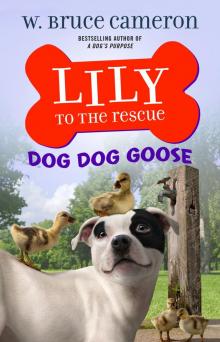 Lily to the Rescue: Dog Dog Goose
Lily to the Rescue: Dog Dog Goose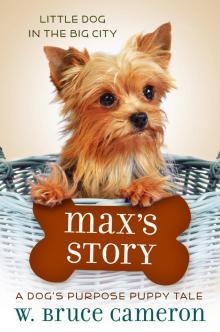 Max's Story
Max's Story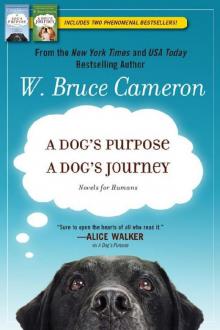 A Dog's Purpose Boxed Set
A Dog's Purpose Boxed Set Toby's Story
Toby's Story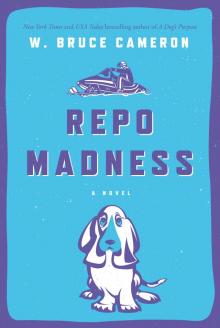 Repo Madness
Repo Madness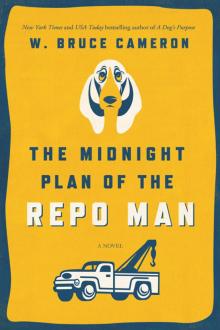 The Midnight Plan of the Repo Man
The Midnight Plan of the Repo Man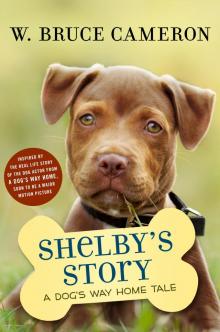 Shelby's Story
Shelby's Story The Dog Master
The Dog Master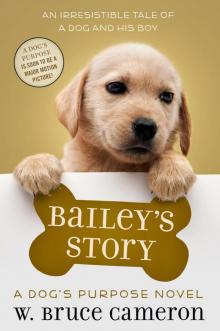 Bailey's Story
Bailey's Story